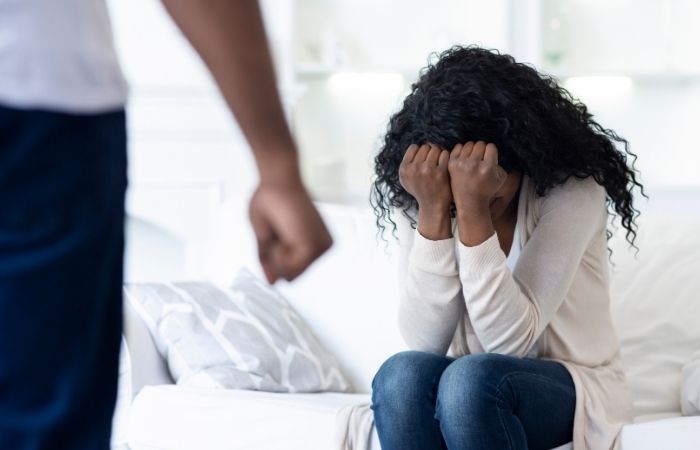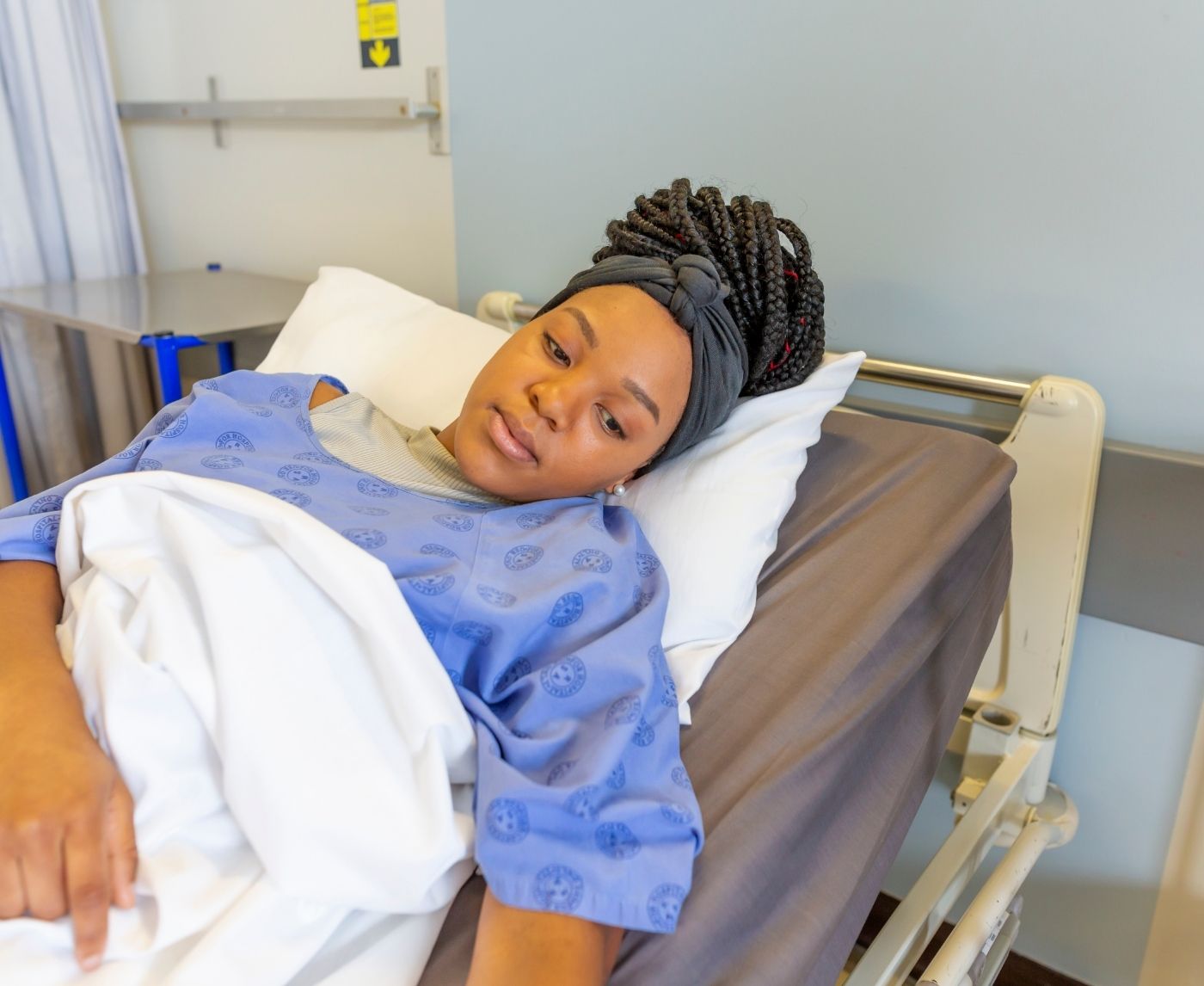Historical Mistrust: From Tuskegee to Today
When you’ve been a target, you remember. The infamous Tuskegee syphilis study kept Black men untreated for 40 years, and the ripple effect still echoes in Black families’ dinner-table lore. Surveys show that Black women are more likely to avoid or delay sexual-health services for fear of judgment, over-treatment, or downright negligence (JAMA Network Open 2024). Add memories of forced sterilizations and you get a generational “side-eye” toward any clinic flyer promising “free testing.”
Yet mistrust isn’t simply emotional baggage; it’s a tangible barrier. A 2023 American Journal of Obstetrics & Gynecology study found that perceived medical racism cut STI screening attendance by nearly 30 percent among Black women aged 18–29. Bottom line: history still haunts exam rooms, and acknowledging that trauma is step one in rebuilding trust.

Black women are also reading: STDs Don’t Look the Same in Everyone, Here’s the Proof
The Numbers: CDC 2023–24 STD Data for Black Women
Data may feel cold, but it clarifies where to aim resources. According to the CDC’s 2023 STD Surveillance Report, Black women recorded:
- 54 percent of all reported chlamydia cases, despite making up only 13 percent of U.S. female population.
- Gonorrhea rates 5× higher than White women.
- A syphilis incidence that rose 17 percent in just one year.
- HIV: Black women represented 55 percent of new female diagnoses in 2024, per HIV.gov.
No, Black women aren’t “less careful.” Studies find condom use rates are comparable across races; what changes the equation is higher background prevalence in partner networks. Think of it like walking through a room where most people already have the flu, your mask helps, but the odds still tilt.
Sexual Network Theory: Why Individual Choices Aren’t the Whole Story
Picture a subway map. If one busy line malfunctions, delays ripple across the entire system. Sexual network theory works the same way: infections concentrate where transmission chains are tight. Research in The Lancet Regional Health 2024 shows that even if a Black woman has the same number of partners as her White counterpart, she is statistically more likely to choose from a pool where infection already circulates, purely because of segregation in dating and social circles.
This isn’t about blame; it’s math. Models reveal that cutting the average time between infection and treatment in a high-prevalence network by just one week can drop community incidence by up to 20 percent within a year. That’s why rapid, confidential at-home STD test kits matter, less delay, fewer ripples.
Check Your STD Status in Minutes
Test at Home with Remedium10-in-1 STD Test Kit

 For Women
For Women Results in Minutes
Results in Minutes No Lab Needed
No Lab Needed Private & Discreet
Private & DiscreetOrder Now $189.00 $490.00
For all 10 tests
Barriers to Regular Screening and Treatment
Even when mistrust eases, real-world obstacles remain:
- Clinic Desert Syndrome: Many predominantly Black neighborhoods have few reproductive-health clinics, and public transit gaps turn a “free” test into a three-hour trek.
- Insurance Gaps: Black women of childbearing age remain twice as likely to be underinsured or uninsured.
- Stigma Standoff: Asking a new partner to test can spark accusations of distrust, so the conversation gets skipped.
- Child-care & work schedules: Missing a shift for a “personal day” threatens income, and sometimes custody, per a 2024 AJPM geospatial study.
Solutions must be just as layered: mobile clinics, employer-covered home test vouchers, and community ambassadors who normalize screening by showing up at hair salons and church brunches.
Racism in Healthcare: Systemic and Everyday
Bias can be overt, dismissed pain, sarcastic lectures, or quietly lethal, like shorter consultation times. A 2022 Women’s Health Journal systematic review tied provider bias to delayed antibiotic prescriptions for gonorrhea among Black women. Meanwhile, Black female medical students report witnessing dismissive attitudes toward their own community, cementing a vicious cycle.
Breaking that loop means accountability metrics: clinics publicly tracking patient-satisfaction gaps by race, and insurers reimbursing cultural-competency training. Until then, self-advocacy is armor: arrive with questions written down, bring a witness if needed, and leverage consumer-powered reviews to spot inclusive providers.
Intimate Partner Violence & STD Risk
Not every partner respects a firm “No.” For Black women, the intersections of intimate partner violence (IPV) and STDs are stark: studies show women experiencing IPV have up to three times the odds of contracting chlamydia or gonorrhea. Fear of retaliation can silence condom negotiation or prevent clinic visits, especially when abusers track spending or rideshare receipts.
Breaking free isn’t only about safety planning; it’s also about health reclamation. Community shelters partnering with mobile testing units have reported a 40 % uptick in same-day treatment initiation since 2023, according to AJPH. If this resonates, call a domestic-violence hotline first, then a clinic. Healing your body often starts with protecting your boundaries.

Black women are also reading: Syphilis Is Back, And It’s Scarier Than Ever
Contraceptive Myths and the Condom Drop-Off
Ever heard, “I’m on the pill, so we’re good”? Hormonal birth control blocks pregnancy, not syphilis or HIV. Yet qualitative research from the Guttmacher Institute 2024 found that among Black women aged 18–24, condom use fell by 22 % after starting long-acting contraception. Couples trade one kind of worry for another without realizing the swap.
Counter the myth with a two-layer mantra: “Plan B for babies, latex for bacteria.” Keep a stash of ultra-thin condoms in your nightstand, purse, and glove box. And if you experience irritation, look for non-latex polyisoprene brands; no more excuses about allergies.
Reproductive Justice Policies Making Waves in 2025
Policy can feel abstract until it lands on your co-pay statement. The 2025 Reproductive Justice Act, now live in five states, requires Medicaid plans to cover at-home STI testing kits and doxy-PEP (a post-sex antibiotic regimen) for qualifying women. Early data from Illinois shows a 19 % jump in completed chlamydia tests among Black enrollees within six months.
National rollout is slow, but you don’t have to wait. Many employer wellness portals reimburse receipts from sites like STD Rapid Test Kits. Screenshot this paragraph, email HR, and ask if your benefits team has joined the 21st-century prevention club.
Male Partner Testing: The Missing Half
Newsflash: Penises don’t magically self-diagnose. Yet Black women often shoulder the entire testing burden. According to Sexual Health (2023), 64 % of heterosexual Black women had been tested in the past year, compared with only 38 % of their male partners. Why the gap? Fear, stigma, and the “I’d know if something was wrong” fallacy.
Flip the script:
- Timing Play: Suggest testing as a pre-vacation “health passport.”
- Data Play: Text him the CDC stat that 50 % of men with chlamydia have zero symptoms.
- Convenience Play: Send him the Complete STD Home Test Kit Package link, no clinic, no gowns, no excuses.
Remember: a partner who balks at knowing his status is waving a red flag, not a love banner.
Check Your STD Status in Minutes
Test at Home with Remedium3-in-1 STD Test Kit

 For Men & Women
For Men & Women Results in Minutes
Results in Minutes No Lab Needed
No Lab Needed Private & Discreet
Private & DiscreetOrder Now $69.00 $147.00
For all 3 tests
Mental Health, Stress & Immunity
Stress isn’t just a vibe, it’s a hormone soup that weakens immune defenses. Black women face disproportionate weathering: chronic exposure to racism and socioeconomic strain that ages the body faster, per a 2022 Psychoneuroendocrinology meta-analysis. Elevated cortisol can make viral shedding of herpes more frequent and slow clearance of HPV infections.
Practical resets:
- Micro-breaks: 60-second box-breathing between work emails.
- Sleep audits: Aim for a bedtime within the same 30-minute window nightly to stabilize cortisol.
- Joy workouts: Pick movement that sparks laughter, dubstep yoga, trap-step aerobics, roller-dance, whatever keeps you coming back.
Self-care isn’t frivolous; it’s immunology on your terms.
Community-Based Interventions: When the Salon Becomes a Safe-Sex Hub
Data meets gossip at the shampoo bowl. In Atlanta, the “Beauty Shop Bridging” program trained stylists to hand out chlamydia test vouchers and host Q&A nights. Results? A 35 % rise in first-time testers among Black women under 30 (AJOG, 2024). Meanwhile, Chicago’s “Sunday Test & Sip” pairs free rapid tests with mocktail brunch after church, because nothing says fellowship like clearing up urethritis.
Takeaway: When health info travels through trusted social nodes, stigma shrinks and follow-through skyrockets. If your city lacks such programs, pitch the idea to local health departments; grant money for minority women’s sexual health is at an all-time high (HHS, 2025).
Telehealth & Tech: Turning Your Phone into a Clinic
Waiting rooms are so 2010. From AI chatbots that screen your symptoms to same-day prescription delivery, digital care is reinventing STI management, especially for Black women juggling jobs, kids, and commutes. A 2025 Telemedicine Journal survey showed that 72 % of Black female respondents preferred app-based STI consultations over in-person visits, citing privacy and “no shade” vibes.

Black women are also reading: The Silent Spreaders: 7 STDs That Lurk in Women’s Bodies for Months
Myth-Busting: “I’d Know If I Had Something”
Reality check: 70 % of women with chlamydia have zero symptoms. That silent spread fuels reinfection cycles and fertility damage. Likewise, early syphilis can masquerade as an ingrown hair, and HSV-2 often hides behind razor burn imposters. A 2024 Lancet Infectious Diseases study found that symptom-based self-diagnosis missed half of active infections in Black women aged 25–35.
Better mantra: “Assume exposure, confirm status.” That means testing after every new partner or every 3–6 months, whichever comes first.
Action Plan: Your 7-Step Roadmap to Lower Risk Tonight
- Stock Up: Keep two Chlamydia + Gonorrhea Home Tests on deck, one for you, one for him.
- Set Calendar Alerts: Schedule quarterly reminders titled “Future-Me Says Thanks.”
- Prep Scripts: Rehearse “Let’s swap results over tacos Friday” in the mirror.
- Layer Protection: Choose condoms + contraception, not either/or.
- Embrace Tele-Docs: Save a telehealth app in your Favorites bar.
- De-Stress Daily: Ten deep breaths between TikTok scrolls.
- Share Wins: Post a coded green-heart emoji when you get negative results, normalize the good news.
FAQs
1. Do Black women really get STDs more often?
Yes, current CDC data shows higher rates for chlamydia, gonorrhea, syphilis, and HIV, driven by systemic and network factors.
2. How often should I test if I’m in a monogamous relationship?
Every 6–12 months unless both partners tested negative after the relationship became exclusive and no new risks occurred.
3. Are home STD tests accurate?
When FDA-cleared and used correctly, sensitivity tops 92 % for chlamydia and 95 % for gonorrhea, comparable to clinic NAATs.
4. I’m allergic to latex. Now what?
Try polyisoprene or polyurethane condoms; they block viruses just as well.
5. Does douching prevent infection?
No, it disrupts vaginal flora and can increase risk.
6. Can untreated chlamydia really cause infertility?
Yes. Up to 20 % of untreated cases progress to PID, scarring fallopian tubes.
7. What is doxy-PEP?
A single 200-mg dose of doxycycline taken within 72 h of unprotected sex shown to cut bacterial STIs by ~60 % in high-risk groups.
8. Does PrEP protect against all STDs?
No, PrEP shields only against HIV. You still need condoms and routine testing.
9. Can stress make herpes outbreaks worse?
Elevated cortisol is linked to more frequent viral shedding, so yes, stress management matters.
10. Where can I find low-cost testing near me?
Start with local health-department clinics or order an at-home kit from STD Rapid Test Kits for under $50.
Stay Vigilant. In More Ways Than One
Black women are not doomed to grim statistics. By pairing history-aware vigilance with modern tech, community power, and routine self-testing, you flip the script from victimhood to informed agency. The journey from distrust to diagnosis takes courage, but every negative result is a victory lap for your future self.
Sources
1. Centers for Disease Control and Prevention – 2023 Sexually Transmitted Disease Surveillance Report
2. HIV.gov – Annual HIV Fact Sheet 2024
3. HHS Office of Minority Health – Minority Health Disparities Report 2024
4. Kaiser Family Foundation – Women’s Health Policy Database 2023










